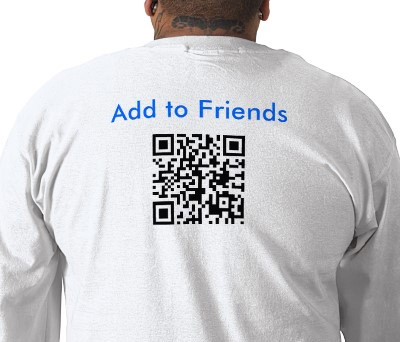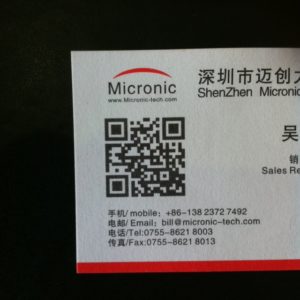QR codes have been around ever since cameras became a standard feature of virtually every cell phone. On the other hand, even today, their usage didn’t become as common as one would expect considering the fact that every one of us is carrying a portable camera in our pockets.
There have been consistent talk in the media about the “death of QR code” with some observers concluding that the technology is going nowhere and is soon to disappear entirely. A couple of weeks ago I’ve also responded to a blog post by Misha about his take on the issue of QRs from the standpoint of its usage in China, here is his original post.
Having participated at one of the trade shows in Shenzhen around the same time, I decided to look around to see how QR codes are being used by show exhibitors, in what context, on which materials and at what type of settings. My overall impression is that the rumors of QR code’s death have been greatly exaggerated…
First of all, QR codes usage on name cards have increased dramatically – about a third of the name cards I got during my interactions with visitors at the show were proudly displaying a QR code. Scanning it would seamlessly integrate a person’s details with my iPhone’s contacts database. Here is an example:
Posters are another main area for displaying QR codes, typically scanning it would take you to a company website or to a page associated with an advertised product. What is interesting is that QR codes take increasingly more real estate on the visuals. Below are a few examples:
Note that in the last example, QR code became the centerpiece and the focus of the entire poster!
Sometimes, QRs are placed in less conspicuous places in a form of a sticker but this would be much less typical choice:
I’ve also seen a few cases when the QRs were integrated with product displays, actual walls or the structures of booths themselves. Check out these examples:
Product datasheets and brochures are another logical locations for placing QR codes at:
Finally, I’ve managed to take a shot of people actually scanning one of the QR codes with their phones:
I admit that I haven’t scanned all of the codes I’ve encountered but those that I did scan took me either to a company website, Weibo page or WeChat. In fact, connecting to WeChat seems to be one of the most popular usages of QR codes in China.
On my way out I just couldn’t resist to take another picture of a large QR code printed on a box placed by the huge Christmas tree at the entrance to Shenzhen’s Coco Park:
Based on what I’ve seen, QR codes are found practically everywhere and its almost universal embrace by marketers in so many industries is quite remarkable. Regardless of whether it’s here to stay or a passing fad until something better comes around, I don’t think there is any excuse left not to integrate QR codes in all of your marketing material.







